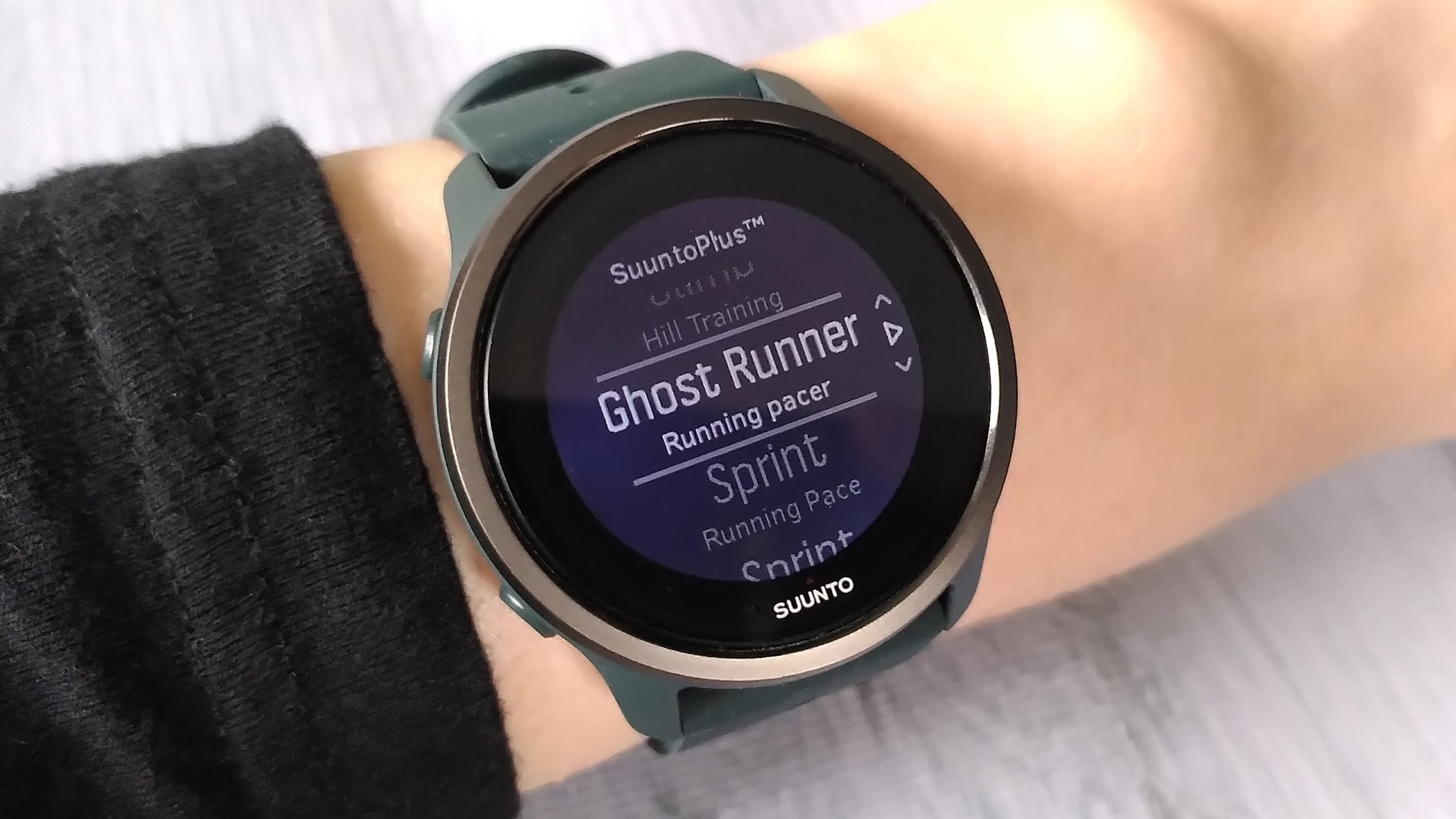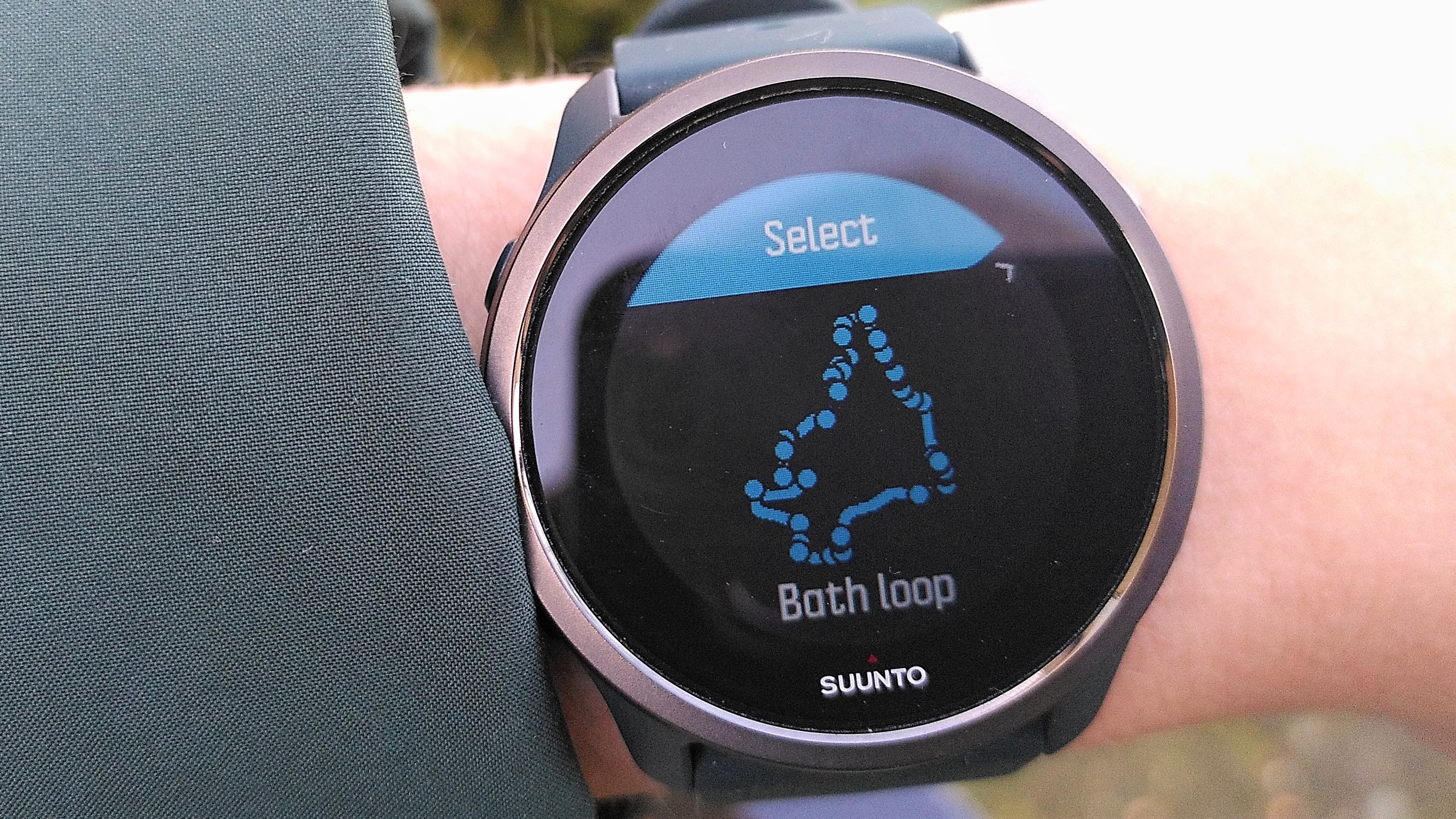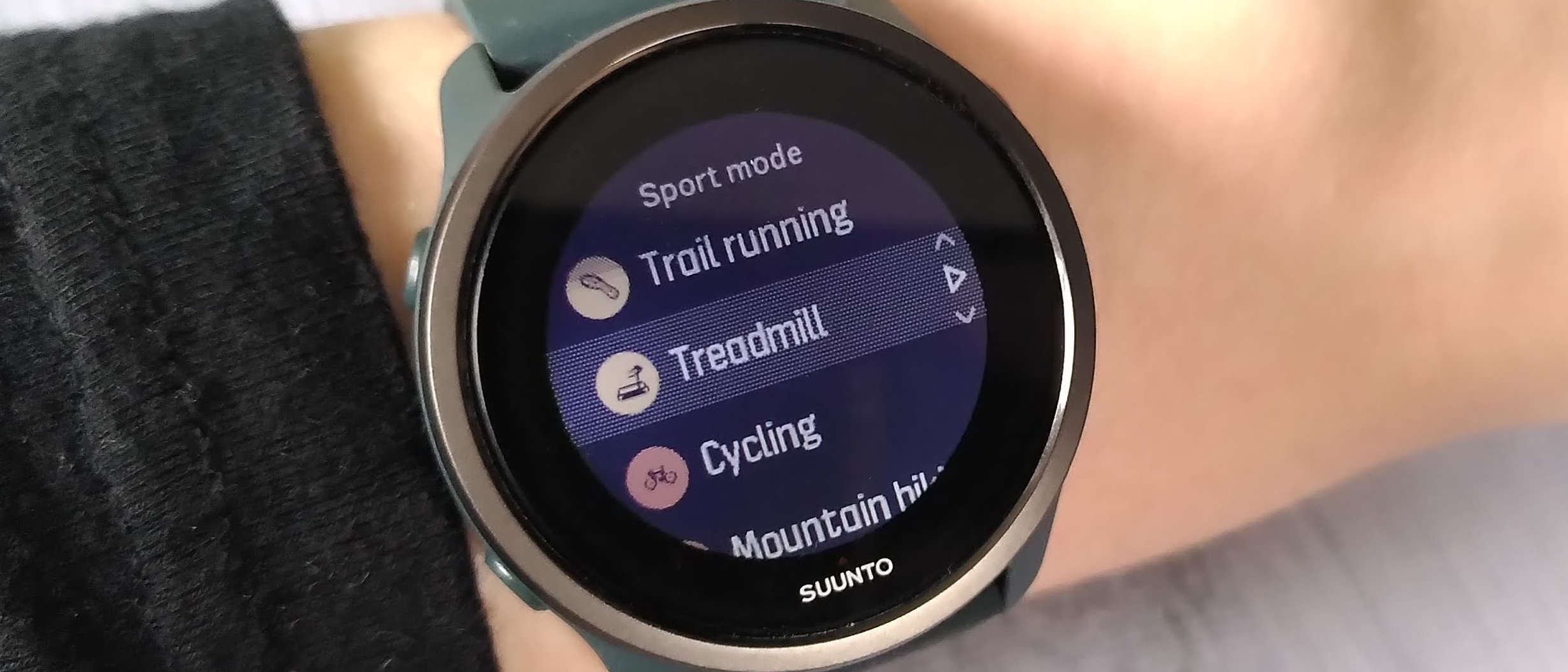TechRadar Verdict
The Suunto 5 Peak is one of the lightest running watches around, but its real selling point is its suite of excellent mapping and navigation tools. It's a superb watch for exploring new routes and mixing up your training. Unfortunately, that light weight seems to come at the expense of battery life; in moderate use, the Suunto 5 Peak lasted just a week between charges, which is much less than we've come to expect from a GPS watch in this price band without a bright AMOLED display sapping its power.
Pros
- +
Superb mapping and navigation
- +
Lightweight and comfortable
- +
Dependable sleep tracking
Cons
- -
Low water resistance rating
- -
Plastic lens (not toughened glass)
- -
10-day max battery life without GPS
Why you can trust TechRadar
Two-minute review
The Suunto 5 Peak is a mid-range running watch with two major selling points: light weight, and superb navigation tools.
As an everyday smartwatch, its features are quite limited. You’ll receive smartphone app notifications, you can decline calls with a text message if you use Android, and you can control your phone’s music app. About standard for a sports watch in this price band.
The 5 Peak really shines when it’s time to start training, with workout suggestions to help you balance your training, suggested recovery times, and tracking for perceived exertion so you can monitor subjective effort as well as objective metrics.
The Suunto app includes some rather opaque performance metrics that you’ll have to spend some time researching. This is unfortunate - most other sports apps give detailed explanations of technical terminology, or process the same data differently and present it in a format that’s readily understandable to a layperson (like Garmin’s race time predictions).

However, Suunto’s app is excellent for route planning. Heat maps allow you to see the most popular roads, trails and tracks for particular activities (everything from trail running to skating), and you can use this info to help plot your own course by tapping waypoints. Maps can be named, saved, and transferred to your watch in a matter of seconds so you’re ready to start exploring.
Although it’s much more attractive than the original Suunto 5, it’s interesting that the 5 Peak's water resistance rating has been downgraded from 50 meters to 30 meters. Many retailers advise that watches with the rating should be regarded as merely splashproof, but we spoke to Suunto, which said that its expertise in diving watches means it's fine to submerge the new watch.
Price and release date
- Released January 2022
- Mid-range price tag
The Suunto 5 Peak was released in January 2022, and costs $329 / £259 / AU$499.99 direct from Suunto or from third-party stores. That’s about mid-range for a running watch, and is roughly the same as the Garmin Instinct 2 or the Coros Apex.
If you need something more advanced and have deep pockets, its bigger sibling the Suunto 9 Peak is available for $699 / £609 / AU$1,200.
Design
- Light plastic/stainless steel case
- Physical buttons; no touchscreen
- Color memory-in-pixel display
The Suunto 5 Peak is one of the lightest running watches we’ve tested in recent years, weighing just 39g not including its silicone strap (41% lighter than the original Suunto 5). Garmin’s entry-level running watch, the Forerunner 55, weighs fractionally less at 37g, but the difference is imperceptible on your wrist.
It’s a much sleeker looking watch than the Suunto 5. The case of the Suunto 5 Peak is still made from plastic, but it now has a slim stainless steel bezel for a touch of class. It’s fitted with a silicone band, and comes in an impressive array of colors: black, ridge sand (a beige hue), ochre, dark heather, cave green, and ridge sand multicolor (beige with speckles of yellow and gray). Whereas most running watches have a toughened glass lens, the Suunto 5 Peak uses plastic to reduce weight.

The buckle is also stainless steel, and there’s a small prong that secures the free end of the watch firmly in place when you’re exercising; a small but thoughtful touch.
There’s no touchscreen; instead, the Suunto 5 Peak is controlled using a set of five buttons positioned around the bezel. If you’re switching from a Garmin watch you’ll soon feel at home, as they function in almost exactly the same way.
Suunto has opted for a color memory-in-pixel (MiP) display here, which is less power-hungry than AMOLED, but less vibrant too. The watch has a blue backlight, which muddies the colors somewhat; for the best contrast, we’d recommend choosing a watch face with blue or white digits.

It’s rated as water resistant to 30 meters, which is a downgrade from the 50-meter rating of the Suunto 5 (surprising since tough design has always been one of Suunto’s strongest suits). This means it could be submerged in water to that depth in theory, but most watch retailers and manufacturers advise that watches with this rating should be regarded as splashproof.
Suunto goes against the grain here, and has equipped the 5 Peak with profiles for swimming, stand-up paddleboarding, kayaking, and even kitesurfing. We asked Suunto about this, and the company said that its expertise in making diving watches means you can safely submerge the watch to the full 30 meters in real world use.
Battery life
- Around one week in typical use
- Tour mode to extend life
- Clip-style charging cable
Suunto has seemingly opted for a smaller battery in order to reduce the weight of the Suunto 5 Peak, and its longevity reflects that. Suunto itself states a maximum battery life of 10 days in ‘time’ mode, and recording an average of one activity per day, we found that the battery ran down in the space of a week.
That’s shorter than we’ve come to expect from a watch without an AMOLED display.For comparison, the Garmin Forerunner 55 keeps going for up to two weeks in smartwatch mode, and will last well over a week with a daily workout thrown in.
The 5 Peak has a Tour mode that extends the battery life significantly if you’re planning to be away from home for a while, though this means you’ll be without the watch’s excellent GPS and navigation tools.
When it’s time for a top-up, you’ll need to attach the 5 Peak to a proprietary clip-style connector. It attaches firmly, and doesn’t shift and pivot out of place, though it’s not as convenient as wireless induction charging.

Smartwatch features
- App notifications
- No NFC or music streaming
- Plot points of interest on map
In terms of smartwatch features, the Suunto 5 Peak has the basics covered. You can receive smartphone notifications (with vibration and audio alert if you prefer). There’s no microphone for making and receiving calls, but if you’re an Android user, you can reject calls with an automatic text response.
There’s no NFC for contactless payments, though you can use the 5 Peak to control music on your phone, which is a real advantage when you’re running and don’t want to dig around in your pocket for your handset.
Mapping and navigation are where the Suunto Peak excels. In our tests it took longer than the Garmin Instinct 2 to establish a GPS lock. However, once it’s established your location, you can easily mark it as a point of interest (POI) so you can find it again later. When exploring a city you can tag cafes, stores and other buildings, and in the wilderness you can pin the location of big game, lakes, and natural landmarks.
Fitness tracking
- Best for runners
- Workout suggestions and live guidance
- Excellent GPS tracking
The Suunto 5 Peak offers an impressive array of workout tracking modes, with the most popular arranged in a neat quick access menu. However, as is often the case, most of these profiles only track heart rate and time; the only difference between them is the way they’re labelled in the Suunto app later.
If you’re a runner, however, you’ll find a great range of tools to support your training. For example, the Suunto 5 Peak provides workout suggestions to help keep your training varied and improve your fitness, and if you choose to go ahead with one of its proposed activities, the watch will give you guidance along the way, telling you if you need to slow down or pick up the pace.

After each workout, you’ll be prompted to rate how it felt. This rate of perceived exertion will then be logged in the Suunto app, where you can browse through your historical data and track trends. You’ll also be advised how long you should allow yourself to recover; a tool that’s particularly helpful for new runners, or anyone stepping up their training who may be at risk of injury by increasing their training load too rapidly.
Other excellent tools include Ghost Runner, which works much like following a pacer in a race, and allows you to see how far ahead or behind your target pace you currently are. This works particularly well with the rate of perceived exertion, helping you understand how different speeds feel, so you can adjust your pace intuitively during races.
There are also sunrise and sunset alarms - the latter of which is particularly handy, as it helps you get back home safely before dark.

Delve into the Suunto app and you can create your own walking, running, or cycling routes that will be transferred to your watch in a matter of seconds. It’s not possible to set a distance and have a route calculated for you automatically, as you can with Garmin Connect, but plotting a course is as simple as tapping waypoints on a map, and allowing the app to join the dots via the most direct path.
Watersports are an interesting area. While the original Suunto 5 was water resistant to 50 meters, the Suunto 5 Peak is only rated to 30 meters. Many watch manufacturers advise that, although they can theoretically handle submersion to this depth, watches with this rating are best regarded as splashproof, and shouldn’t be used for watersports. The Suunto 5 Peak, however, has a full array of swimming and watersports modes, including stand-up paddleboarding, kitesurfing, and kayaking to name just a handful.

In our spinning tests, the Suunto 5 Peak’s heart rate monitor was quick to detect changes in heart rate, and let us easily see which heart rate zone we were working in. However, its measurements were consistently about 3-5 beats per minute slower than those recorded using a chest strap heart rate monitor.
Companion app
- Fitness and effort scores not well explained
- Excellent route planning tools
- Syncs with popular third-party apps
The Suunto 5 Peak works in tandem with the Suunto app, which is available for both iOS and Android. It’s compatible with all the most popular running and fitness apps, including Strava, Komoot, and Training Peaks, allowing you to easily download routes, share your workouts, and accumulate kudos.
After a workout, you’ll be presented with an array of stats in the app, including duration, average heart rate, maximum heart rate, and calories burned. However, you’ll also get a set of scores that need some interpretation: PTE, TSS, and EPOC.

The app doesn’t explain what PTE stands for (it’s peak training effort), but it gives a clear description of what the number means. A score between one and two means you’re building foundational fitness, three to four means you’re improving aerobic fitness, and five means you’re pushing yourself to the limit, and should take care.
TSS stands for training stress score, and is based on the intensity and duration of your workout, but the app doesn’t give any indication of what different scores mean. It’s a similar story with EPOC - which stands for excess post-exercise oxygen consumption. The Suunto app advises you that a higher score is better, but doesn’t tell you how it’s calculated, or whether your score is good for someone of your age and gender.
Other apps, such as Garmin Connect and Polar Flow, make similar calculations, but put your effort and recovery stats into simple language rather than using technical terminology that’s not thoroughly explained.

Sleep tracking is much more clearly presented, and although there’s no SpO2 sensor to keep tabs on blood oxygen saturation overnight, the watch does a good job detecting when you actually fall asleep rather than when you’re just settling down for the night. You don’t get a full breakdown of time spent in different sleep stages, but the watch does calculate how much restorative deep sleep you managed to get.
Each day, you’ll also receive a ‘resources’ score. Much like Fitbit’s readiness score and Garmin’s body battery, this is an indication of how much energy you’re likely to have for the day ahead, based on your sleep quality and recent activity levels.
However, as with the watch itself, mapping is where the Suunto app really excels. One of its best features is its ability to generate 3D heatmaps showing the most frequently used routes near you - whether your preferred activity is road running, trail running, road cycling, MTB, skiing, or even rollerskating (a handy way of identifying skate-friendly parks).

You can bookmark a map view for future reference, or tap the plus icon to start creating your own route based on the info on screen. It’s simply presented, but very effective and really sets the Suunto 5 Peak (and other Suunto watches) apart from rivals in the same price bracket.
First reviewed February 2022
Buy it if
Running is your main sport
Although this is a multi-sports watch, its best tools are reserved for runners, including workout suggestions to help balance your training, a virtual runner to help pace yourself, and automatic sprint tracking.
You want to explore new routes
Plotting new courses in the Suunto app is a piece of cake, particularly thanks to the excellent heatmaps that show popular routes for different sports, and you can sync custom routes to your watch in seconds.
Don't buy it if
You want to go phone-free
There's no storage on the Suunto 5 Peak for music and no NFC for contactless payments, so you'll want to keep your handset within reach.
You want easily digestible insights
The Suunto app is lively and fun, but not all your workout stats are explained in a way that's easy to understand, and a little research may be in order if you're going to make the most of them.

Cat is TechRadar's Homes Editor specializing in kitchen appliances and smart home technology. She's been a tech journalist for 15 years, having worked on print magazines including PC Plus and PC Format, and is a Speciality Coffee Association (SCA) certified barista. Whether you want to invest in some smart lights or pick up a new espresso machine, she's the right person to help.
